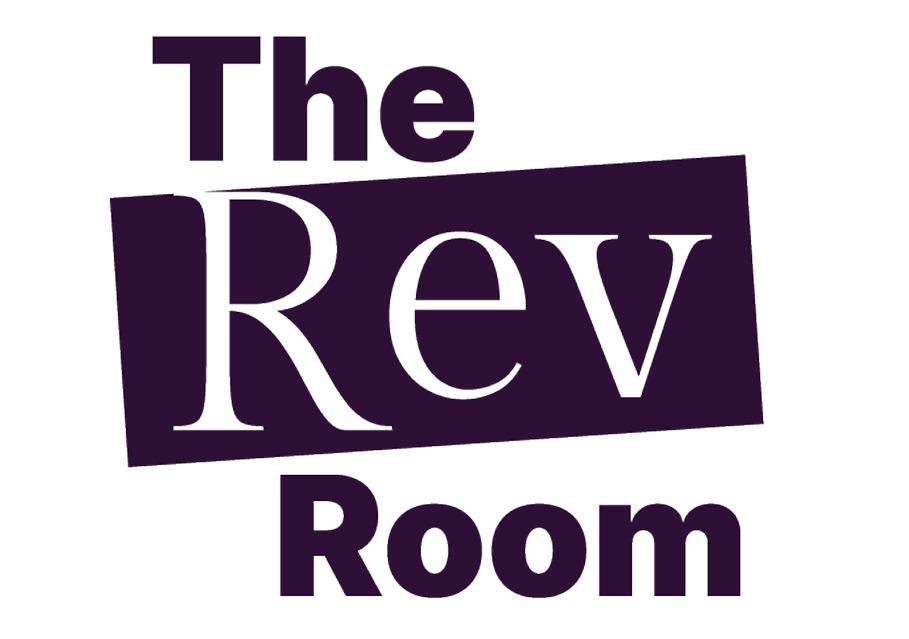How we built our AI marketing avengers team
.svg)

In partnership with:
Featuring
Featuring
How are you going to stand out in 2026?
Buyers are in control of the buying process. Over 70% of it is happening online. And they are putting companies on their short list of vendors that provide value and establish trust with their content.
How are you accounting for this in your 2026 strategy?
You need to stand out. To make sure your buyers notice you. Let us help you build that into your strategy for next year -->
%20(1).webp)
The Revenue Marketer

How we built our AI marketing avengers team
Still chasing 10% efficiency gains?
2023-2025 were the years of experimentation with AI. 2026 is the year to make it transformative. If you're still trying to figure out the strategic advantage AI will bring to your team, we're here to help!
Ready to assemble your AI Avengers? Let's talk about building a team that can harness the power of AI without accidentally creating Skynet.
You've dipped your toes in the AI waters. You've even convinced your team it's not just another buzzword. Now it's time to get serious about integrating AI into your daily operations. But where do you start? With the right people, of course.
Step 1: Form Your AI Council (Yes, It Sounds Cool)
First things first: You need a dedicated group to lead your AI charge. This isn't just another committee to plan the office holiday party. This is your AI brain trust.
Why do you need this?
- To keep your AI initiatives aligned with business goals (no, we don't need an AI that writes dad jokes... or do we?)
- To prevent duplicate efforts across teams (we don't need three different AIs naming our products)
- To share knowledge and best practices
Who should be on this council? Glad you asked. The secret sauce isn't just job titles—it's curiosity and passion for AI. Look for these qualities first, then consider including:
- The Executive Sponsor: That's you, fearless marketing leader. Your involvement signals the importance of this initiative.
- The Visionary: Someone who can see the big picture of how AI fits into your strategy.
- The Techie: Your resident AI/ML enthusiast (or the closest thing you have to one).
- The Data Guru: Because AI is nothing without good data.
- The Ethicist: To keep your AI initiatives on the straight and narrow.
- The Skeptic: Yes, you need someone to play devil's advocate. Thank them later.
- The IT Guru: Because at some point, you'll need to integrate AI with existing systems.
- The Legal Eagle: To navigate the murky waters of AI regulations and data privacy.
- The Procurement Pro: They'll help you source and manage AI tools effectively.
Remember, the key is to gather a diverse group of curious minds passionate about AI's potential. You're not just filling seats; you're assembling a team of AI champions who will drive adoption across your organization. If you’re inspired by how our teams come together across disciplines, explore Careers at Inverta — where innovation and collaboration meet.
Step 2: Develop Your AI Playbook
Now that you have your dream team, it's time to set some ground rules. Your AI playbook should cover:
- AI Policy and Guidelines: What can AI be used for? What's off-limits? Who has access to what tools?
- Data Handling and Compliance: How will you ensure you're using customer data in ways that don't violate your privacy policies? (Spoiler alert: This is crucial. Get it wrong, and you'll have bigger problems than an AI writing bad puns.)
- Tool Selection: Which AI tools will you use for what purposes? (Hint: The answer isn't "whatever's free")
- Training and Upskilling: How will you keep your team's AI skills sharp? (Watching "The Terminator" doesn't count as training)
- Measurement and ROI: How will you measure the impact of your AI initiatives? (No, "it looks cool" is not a metric)
Creating this foundation is essential for what we call Martech readiness — ensuring your marketing technology, people, and processes are aligned to make AI truly effective and scalable.
Remember, this playbook isn't set in stone. It should be as adaptable as the technology it governs.
Step 3: Identify and Pilot AI Use Cases
Time to put your shiny new AI task force to work. Have them identify potential AI use cases in your operations. Look for tasks that are:
- Repetitive and time-consuming
- Data-intensive
- Prone to human error
- In need of personalization at scale
Some ideas to get you started:
- Content creation and optimization
- Insights on campaign performance
- Personalized email marketing
- Ad copy generation and testing
Once you've identified potential use cases, pick three to pilot. Why three? Because one is not enough data, and five is too many to manage without losing your mind.
Step 4: Embrace the Role of AI Cheerleader (Pom-poms Optional)
As a leader, your job is now to be the biggest AI advocate in your organization. This means:
- Celebrating AI wins (even the small ones)
- Encouraging experimentation and learning from failures
- Providing resources for ongoing AI education
- Regularly communicating the value of AI to stakeholders
Remember, culture eats strategy for breakfast. If your team doesn't buy into the AI vision, all your fancy tools and policies won't amount to a hill of beans.
The Bottom Line
Building an AI-ready team isn't just about hiring a bunch of data scientists (though that doesn't hurt). It's about creating a culture of innovation, continuous learning, and ethical AI use.
Will there be challenges? Absolutely. Will someone inevitably ask if the AI can do their job for them while they nap? Probably. But with the right team, the right guidelines, and the right attitude, you'll be well on your way to harnessing the power of AI.
If you’re looking to tie your AI strategy directly to measurable outcomes, check out our Revenue marketing playbook — it’s packed with frameworks to connect marketing innovation with real business growth.
So, are you ready to assemble your AI task force and lead your team into the future? Or are you going to wait until your competitors' AI-powered campaigns are running circles around yours?
The choice is yours. Choose wisely.
---
Stay tuned for our next post, where we'll dive into conducting an AI impact analysis and creating a roadmap for your organization. It's going to be a wild ride!
About the author
Service page feature

Artificial intelligence
Ready to assemble your AI Avengers? Let's talk about building a team that can harness the power of AI without accidentally creating Skynet.
You've dipped your toes in the AI waters. You've even convinced your team it's not just another buzzword. Now it's time to get serious about integrating AI into your daily operations. But where do you start? With the right people, of course.
Step 1: Form Your AI Council (Yes, It Sounds Cool)
First things first: You need a dedicated group to lead your AI charge. This isn't just another committee to plan the office holiday party. This is your AI brain trust.
Why do you need this?
- To keep your AI initiatives aligned with business goals (no, we don't need an AI that writes dad jokes... or do we?)
- To prevent duplicate efforts across teams (we don't need three different AIs naming our products)
- To share knowledge and best practices
Who should be on this council? Glad you asked. The secret sauce isn't just job titles—it's curiosity and passion for AI. Look for these qualities first, then consider including:
- The Executive Sponsor: That's you, fearless marketing leader. Your involvement signals the importance of this initiative.
- The Visionary: Someone who can see the big picture of how AI fits into your strategy.
- The Techie: Your resident AI/ML enthusiast (or the closest thing you have to one).
- The Data Guru: Because AI is nothing without good data.
- The Ethicist: To keep your AI initiatives on the straight and narrow.
- The Skeptic: Yes, you need someone to play devil's advocate. Thank them later.
- The IT Guru: Because at some point, you'll need to integrate AI with existing systems.
- The Legal Eagle: To navigate the murky waters of AI regulations and data privacy.
- The Procurement Pro: They'll help you source and manage AI tools effectively.
Remember, the key is to gather a diverse group of curious minds passionate about AI's potential. You're not just filling seats; you're assembling a team of AI champions who will drive adoption across your organization. If you’re inspired by how our teams come together across disciplines, explore Careers at Inverta — where innovation and collaboration meet.
Step 2: Develop Your AI Playbook
Now that you have your dream team, it's time to set some ground rules. Your AI playbook should cover:
- AI Policy and Guidelines: What can AI be used for? What's off-limits? Who has access to what tools?
- Data Handling and Compliance: How will you ensure you're using customer data in ways that don't violate your privacy policies? (Spoiler alert: This is crucial. Get it wrong, and you'll have bigger problems than an AI writing bad puns.)
- Tool Selection: Which AI tools will you use for what purposes? (Hint: The answer isn't "whatever's free")
- Training and Upskilling: How will you keep your team's AI skills sharp? (Watching "The Terminator" doesn't count as training)
- Measurement and ROI: How will you measure the impact of your AI initiatives? (No, "it looks cool" is not a metric)
Creating this foundation is essential for what we call Martech readiness — ensuring your marketing technology, people, and processes are aligned to make AI truly effective and scalable.
Remember, this playbook isn't set in stone. It should be as adaptable as the technology it governs.
Step 3: Identify and Pilot AI Use Cases
Time to put your shiny new AI task force to work. Have them identify potential AI use cases in your operations. Look for tasks that are:
- Repetitive and time-consuming
- Data-intensive
- Prone to human error
- In need of personalization at scale
Some ideas to get you started:
- Content creation and optimization
- Insights on campaign performance
- Personalized email marketing
- Ad copy generation and testing
Once you've identified potential use cases, pick three to pilot. Why three? Because one is not enough data, and five is too many to manage without losing your mind.
Step 4: Embrace the Role of AI Cheerleader (Pom-poms Optional)
As a leader, your job is now to be the biggest AI advocate in your organization. This means:
- Celebrating AI wins (even the small ones)
- Encouraging experimentation and learning from failures
- Providing resources for ongoing AI education
- Regularly communicating the value of AI to stakeholders
Remember, culture eats strategy for breakfast. If your team doesn't buy into the AI vision, all your fancy tools and policies won't amount to a hill of beans.
The Bottom Line
Building an AI-ready team isn't just about hiring a bunch of data scientists (though that doesn't hurt). It's about creating a culture of innovation, continuous learning, and ethical AI use.
Will there be challenges? Absolutely. Will someone inevitably ask if the AI can do their job for them while they nap? Probably. But with the right team, the right guidelines, and the right attitude, you'll be well on your way to harnessing the power of AI.
If you’re looking to tie your AI strategy directly to measurable outcomes, check out our Revenue marketing playbook — it’s packed with frameworks to connect marketing innovation with real business growth.
So, are you ready to assemble your AI task force and lead your team into the future? Or are you going to wait until your competitors' AI-powered campaigns are running circles around yours?
The choice is yours. Choose wisely.
---
Stay tuned for our next post, where we'll dive into conducting an AI impact analysis and creating a roadmap for your organization. It's going to be a wild ride!
Resources
About the author
Service page feature

Artificial intelligence
How we built our AI marketing avengers team

Speakers
Other helpful resources
Ready to assemble your AI Avengers? Let's talk about building a team that can harness the power of AI without accidentally creating Skynet.
You've dipped your toes in the AI waters. You've even convinced your team it's not just another buzzword. Now it's time to get serious about integrating AI into your daily operations. But where do you start? With the right people, of course.
Step 1: Form Your AI Council (Yes, It Sounds Cool)
First things first: You need a dedicated group to lead your AI charge. This isn't just another committee to plan the office holiday party. This is your AI brain trust.
Why do you need this?
- To keep your AI initiatives aligned with business goals (no, we don't need an AI that writes dad jokes... or do we?)
- To prevent duplicate efforts across teams (we don't need three different AIs naming our products)
- To share knowledge and best practices
Who should be on this council? Glad you asked. The secret sauce isn't just job titles—it's curiosity and passion for AI. Look for these qualities first, then consider including:
- The Executive Sponsor: That's you, fearless marketing leader. Your involvement signals the importance of this initiative.
- The Visionary: Someone who can see the big picture of how AI fits into your strategy.
- The Techie: Your resident AI/ML enthusiast (or the closest thing you have to one).
- The Data Guru: Because AI is nothing without good data.
- The Ethicist: To keep your AI initiatives on the straight and narrow.
- The Skeptic: Yes, you need someone to play devil's advocate. Thank them later.
- The IT Guru: Because at some point, you'll need to integrate AI with existing systems.
- The Legal Eagle: To navigate the murky waters of AI regulations and data privacy.
- The Procurement Pro: They'll help you source and manage AI tools effectively.
Remember, the key is to gather a diverse group of curious minds passionate about AI's potential. You're not just filling seats; you're assembling a team of AI champions who will drive adoption across your organization. If you’re inspired by how our teams come together across disciplines, explore Careers at Inverta — where innovation and collaboration meet.
Step 2: Develop Your AI Playbook
Now that you have your dream team, it's time to set some ground rules. Your AI playbook should cover:
- AI Policy and Guidelines: What can AI be used for? What's off-limits? Who has access to what tools?
- Data Handling and Compliance: How will you ensure you're using customer data in ways that don't violate your privacy policies? (Spoiler alert: This is crucial. Get it wrong, and you'll have bigger problems than an AI writing bad puns.)
- Tool Selection: Which AI tools will you use for what purposes? (Hint: The answer isn't "whatever's free")
- Training and Upskilling: How will you keep your team's AI skills sharp? (Watching "The Terminator" doesn't count as training)
- Measurement and ROI: How will you measure the impact of your AI initiatives? (No, "it looks cool" is not a metric)
Creating this foundation is essential for what we call Martech readiness — ensuring your marketing technology, people, and processes are aligned to make AI truly effective and scalable.
Remember, this playbook isn't set in stone. It should be as adaptable as the technology it governs.
Step 3: Identify and Pilot AI Use Cases
Time to put your shiny new AI task force to work. Have them identify potential AI use cases in your operations. Look for tasks that are:
- Repetitive and time-consuming
- Data-intensive
- Prone to human error
- In need of personalization at scale
Some ideas to get you started:
- Content creation and optimization
- Insights on campaign performance
- Personalized email marketing
- Ad copy generation and testing
Once you've identified potential use cases, pick three to pilot. Why three? Because one is not enough data, and five is too many to manage without losing your mind.
Step 4: Embrace the Role of AI Cheerleader (Pom-poms Optional)
As a leader, your job is now to be the biggest AI advocate in your organization. This means:
- Celebrating AI wins (even the small ones)
- Encouraging experimentation and learning from failures
- Providing resources for ongoing AI education
- Regularly communicating the value of AI to stakeholders
Remember, culture eats strategy for breakfast. If your team doesn't buy into the AI vision, all your fancy tools and policies won't amount to a hill of beans.
The Bottom Line
Building an AI-ready team isn't just about hiring a bunch of data scientists (though that doesn't hurt). It's about creating a culture of innovation, continuous learning, and ethical AI use.
Will there be challenges? Absolutely. Will someone inevitably ask if the AI can do their job for them while they nap? Probably. But with the right team, the right guidelines, and the right attitude, you'll be well on your way to harnessing the power of AI.
If you’re looking to tie your AI strategy directly to measurable outcomes, check out our Revenue marketing playbook — it’s packed with frameworks to connect marketing innovation with real business growth.
So, are you ready to assemble your AI task force and lead your team into the future? Or are you going to wait until your competitors' AI-powered campaigns are running circles around yours?
The choice is yours. Choose wisely.
---
Stay tuned for our next post, where we'll dive into conducting an AI impact analysis and creating a roadmap for your organization. It's going to be a wild ride!
About the author
Service page feature







